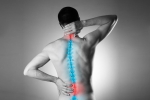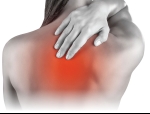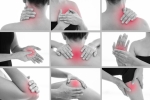Home »
Blog » Back Pain
| Stem Cell, PRP, Acupuncture in Queens & Long Island, New York
Back Pain | Stem Cell, PRP, Acupuncture in Queens & Long Island, New York
Tags: Back Pain | Posted on: 31-Dec-2019 | No of views: 5617 Who's at Risk for Low Back Pain? - Most people experience back pain first when they're in their 30s. The odds of additional attacks increase with age. Other reasons your low back may hurt include: Being overweight, Being sedentary, Lifting heavy stuff on the job, Diagnosing Low Back Pain. To help your doctor diagnose the source of low back pain, be specific in describing the type of pain, when it started, related symptoms, and any history of chronic conditions. Your doctor will probably not need to order X-rays, CT or MRI scans before starting treatment.
Read more
Tags: Back Pain | Posted on: 27-Dec-2019 | No of views: 5418 When you are experiencing low back pain, your first instinct may be to crawl into bed. Until a few decades ago, your doctor probably would have told you to do exactly that. But the tide has turned on our understanding of what is best for tackling back pain, and now the consensus is this: When you have back pain, you should limit or avoid bed rest.
Read more
Tags: Back Pain | Posted on: 26-Dec-2019 | No of views: 7175 Overview - Upper back and neck pain can stop you in your tracks, making it difficult to go about your typical day. The reasons behind this discomfort vary, but they all come down to how we hold ourselves while standing, moving, and most important of all sitting. Neck and upper back pain can limit your movements and capabilities. If you don’t do anything about your pains, they can get worse, spread, and limit you further. This is usually because the muscles around your immediate area of pain have tensed up to protect that one spot. That expansion limits movement and can turn one clenched muscle under your shoulder blade into a painful shoulder and a tension headache.
Read more
Tags: Back Pain | Posted on: 24-Dec-2019 | No of views: 5242 What Is Low Back Pain? - Low back pain is a universal human experience -- almost everyone has it at some point. The lower back, which starts below the ribcage, is called the lumbar region. Pain here can be intense and is one of the top causes of missed work. Fortunately, low back pain often gets better on its own. When it doesn't, there are effective treatments.
Symptoms of Low Back Pain - Symptoms range from a dull ache to a stabbing or shooting sensation. The pain may make it hard to move or stand up straight. Acute back pain comes on suddenly, often after an injury from sports or heavy lifting. Pain that lasts more than three months is considered chronic.
Read more
Tags: Back Pain | Posted on: 20-Dec-2019 | No of views: 5136 Nearly everyone can benefit from massage therapy and its ability to relax muscle tissue and improve blood flow. This may be especially true for chronic patients who rely on frequent treatments from chiropractors or massage therapists. In fact, those with chronic pain may find that they’d like to get more massages, but it's too expensive. With this in mind, we searched for some do-it-yourself ideas and found great examples of how patients with back pain can seek pain relief through do-it-yourself massage techniques. All that’s needed for this DIY massage is a couple of tennis balls, some duct tape, a floor, and no more than 10 to 15 minutes daily.
Read more
Tags: Back Pain | Posted on: 06-Dec-2019 | No of views: 4941 Pain from degenerative disc disease can be debilitating, but you have options. Here are several treatment options and ways to think about managing your degenerative disc disease. Hopefully one or a few of these will work for you. Exercise Relieves Pain - Most people don't associate exercise with pain relief, but when it comes to degenerative disc disease, exercise is an elixir of sorts. It spurs blood flow and builds the supporting structures around the affected disc so that the impact of degeneration is lessened.
Read more
Tags: Back Pain | Posted on: 29-Nov-2019 | No of views: 6577 If you have lumbar spinal stenosis, you may be wondering if playing golf is a good idea. If you've had a spinal stenosis surgery, you may even wonder if golf is possible. The answer for many is yes, but there are a number of considerations to keep in mind. First, recognize that golfing is not really the best thing for your low back. The golf swing imparts a tremendous amount of stress to your lumbar spine. If you are going to return to golf, be willing to accept that there is some risk of injury to the low back.
Read more
Tags: Back Pain | Posted on: 22-Nov-2019 | No of views: 6242 A lumbar herniated disc can create sciatica pain that's often described as a searing, burning, or radiating along the path of the sciatic nerve and down the leg. No single treatment option works for everyone, so it's best to learn about everything available and see what works best for you. Here are 5 tips to help you on your way: 1. Heat can help relieve your muscle spasms...
Read more
Tags: Back Pain | Posted on: 20-Nov-2019 | No of views: 8354 Musculoskeletal pain refers to pain in the muscles, bones, ligaments, tendons, and nerves. You can feel this pain in just one area of the body, such as your back. You can also have it throughout your body if you have a widespread condition like fibromyalgia. The pain can range from mild to severe enough to interfere with your day-to-day life. It may start suddenly and be short-lived, which is called acute pain. Pain that lasts for more than 3 to 6 months is called chronic pain.
Read more
Tags: Back Pain | Posted on: 19-Nov-2019 | No of views: 4999 Physical therapy is often one of the best choices you can make when you have long-term pain (also called chronic pain) or an injury. It can make you stronger and help you move and feel better. Ask your doctor to recommend a physical therapist. You'll probably need a series of visits, and you should practice some of the exercises at home for the best results. Physical therapists have a lot of training. Still, it’s a good idea to ask them about their experience of working with people who've had conditions like yours. You can also ask them how many sessions you'll need.
Read more
Love this Post? Spread the World
























